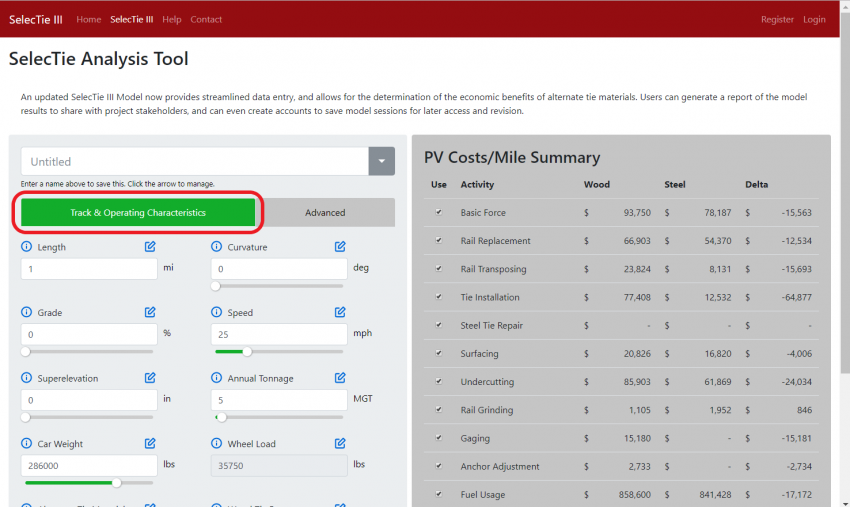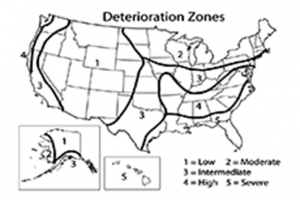User Inputs - Track & Operating Characteristics
The Track & Operating Characteristics section contains the primary track segment inputs, options for user notes, and links to input definitions. Depending on the type of input (numeric or text), the user can adjust inputs by typing numbers, using arrows to increase or decrease, or choose from a drop-down list (i.e., text).

These primary track segment characteristics include the following:
- Length: Length of the track segment being analyzed in miles. Note that the length does not affect the calculations since all analyses are done on a per mile basis. A total estimated cost can be obtained by multiplying the per mile cost values by the length.
- Grade: Grade of the track segment being analyzed in percent (%). For a long segment of track, the largest grade or weighted average grade can be used.
- Superelevation: Superelevation of the curvature of the track segment being analyzed in inches (in). For a long segment of track, the largest superelevation (for the sharpest curve) or weighted average superelevation (related to average curvature) can be used.
- Car weight: Weight of cars on the track segment being analyzed in pounds (lbs). Car weights will vary within a train. The heaviest car weight can be used or a weighted average car weight.
- Alternate Tie Material: Tie type to be compared with wood ties. Select Concrete, Composite, or Steel. Note that default costs and component lives are defined for each tie type.
- Climate: Climate zone where the track segment is located. Select Hot/Dry, Moderate, Cold/Wet based on US Forest Product Decay Hazard Map. This effects the deterioration of wood ties due to environmental decay.

- Curvature: Curvature of the track segment being analyzed in degrees (Note Curvature in degrees = 5730/Radius, Radius in feet). For a long segment of track, the largest curvature or weighted average curvature can be used.
- Speed: Speed of track segment being analyzed in miles per hour (mph). For a long segment of track, the fastest speed or weighted average speed can be used. Note that the speed should be the maximum allowed for the curvature/superelevation of the segment. Segments can be analyzed independently to account for large changes.
- Annual Tonnage: Annual traffic density on track segment being analyzed in million gross tons (MGT).
- Wheel Load: The calculated wheel load on the track (in pounds) based on the input weight of the car under 4 axles.
- Wood Tie Fastener: The type of fastener being used on wood ties. Select Cut Spike or Elastic. Note that default costs and component lives are defined for each wood tie fastener type.
- Interest Rate: The cost of money in percent (%), defined as follows; the amount of profit that could be generated from interest payments on a given amount of money if it were invested in government bonds.
Return to main Help page.